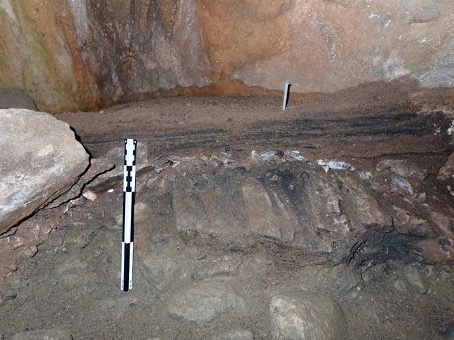The upper sand layers in Nygrotta are deposited in the Holocene period and contain shells and bones that have previously been dated to 9500-9000 cal BP (the Middle Mesolithic). These could have been brought there by animals, but human occupation has been documented in this period other places in the area.
So far, we have excavated a trench and two test pits in search of possible human occupation in Nygrotta. The sediments have been water sieved to look for lithic artefacts and other organic material. The sand layers contain large amounts of shells (patella and mytulis) and bones of various species of birds, fish, and mammals, all potential components of a human diet. In addition, we found fragments of charcoal among the organic material. This could be an indication of human occupation. But the strongest evidence, the lithic artefacts and debris, has not yet been found. But, the search continues for two more weeks, and many buckets have yet to be sieved.

